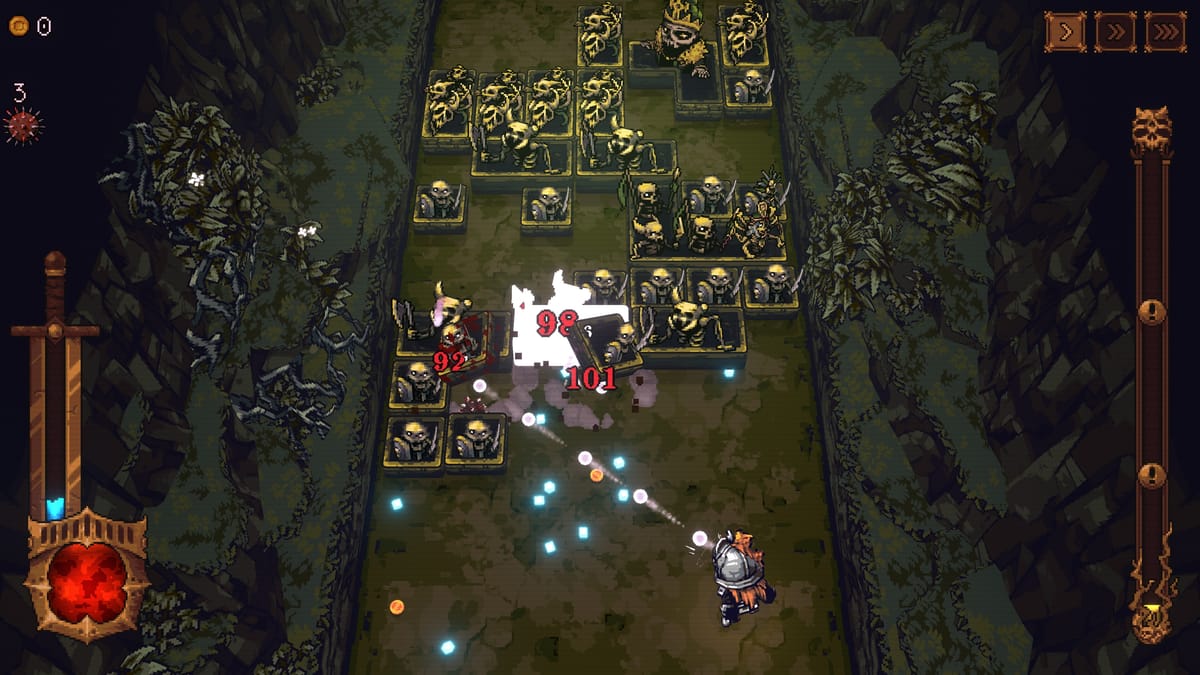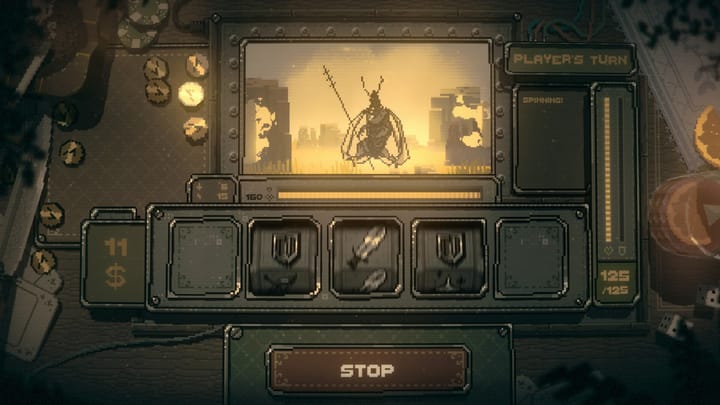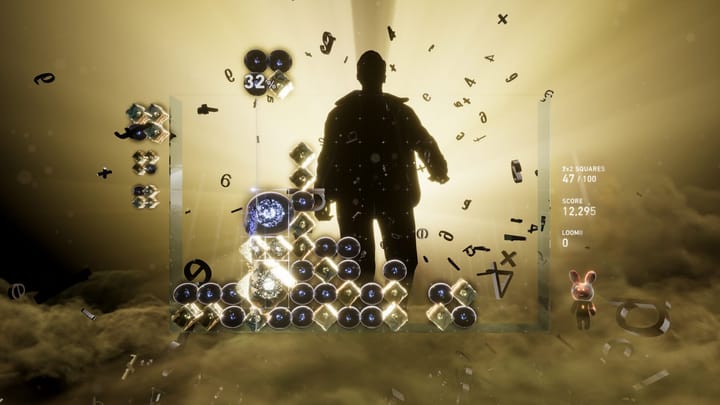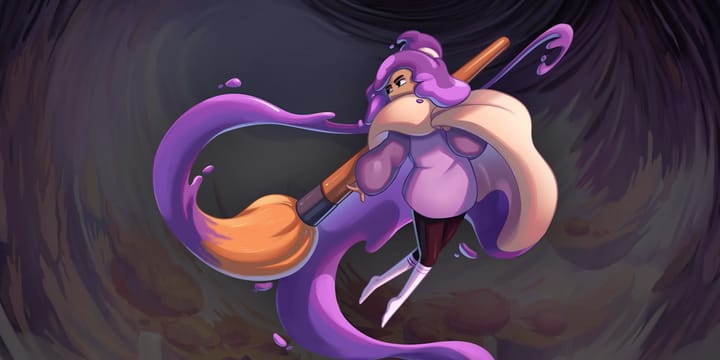Unlike a lot of people, I was fairly late to getting all-but-lost in the intensely-addictive, intensly-moreish cycle of "one more go, then I'll quit I swear" that was (and most likely still is) Vampire Survivors. A game that, in the years following, has carved out a fresh but intoxicating pivot from the established roguelike formula. A microgenre – sometimes dubbed "bullet heaven" – whose emphasis on hurriedly racking up experience and pushing back against the screen-filling (at times, quite literally) hordes of enemies, can be both a power-fantasy, but also in many ways a power-trip of justifiable visual insanity.
In hindsight, seeing that kind of hastened desperation to become all-powerful and visually expressive in that regard, finally cross-paths with a game/concept like Breakout, should come as no surprise. Alongside the likes of Tetris, Breakout – or Arkanoid as it's sometimes broadly referred to – is another one of those classic, timeless staples of game design whose supposed simplicity, hides a much more sinister level of complexity and challenge to either exploit and master, or be led astray over and fail at. Much like Vampire Survivors and its many imitators, Breakout is a series and concept that requires you to dabble in its more chaotic tendencies. Whether that's adding to the amount of balls on screen, attempting more risky angles of trajectory. Or even just what rectangular blocks you should aim to clear first.
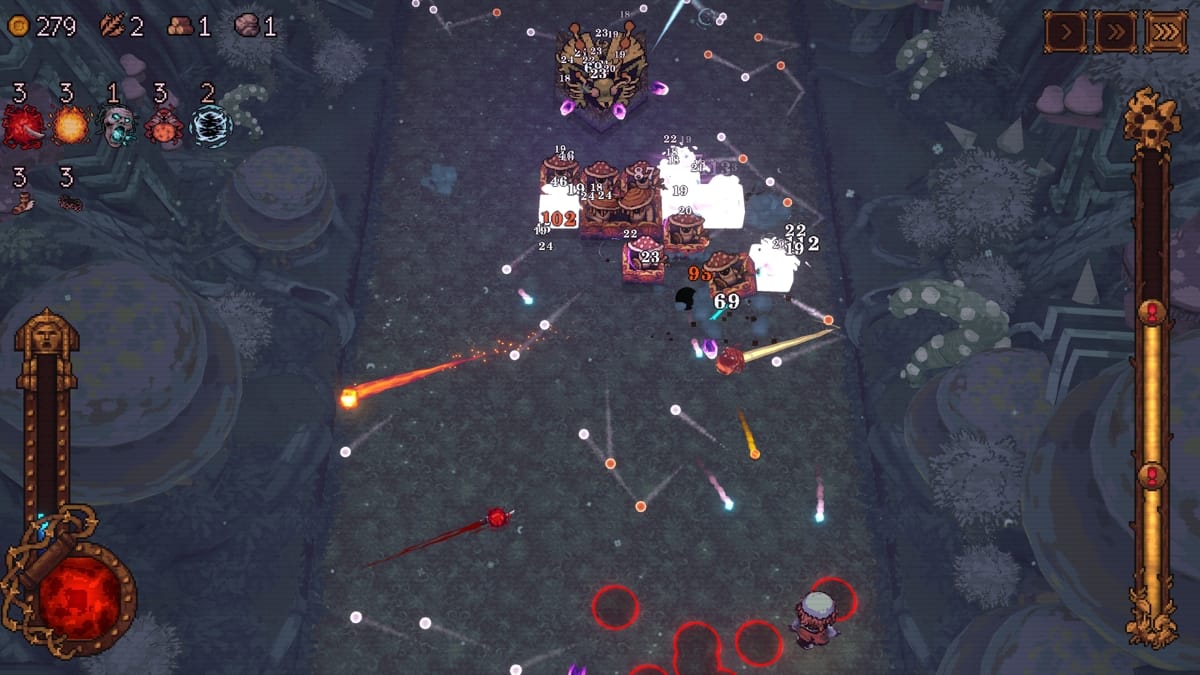
Playing Ball x Pit – the latest creation from developer Kenny Sun (and friends) – I'm reminded of the lessons a series like Breakout or Tetris instils on its players: safety can only get you so far. Sometimes, the riskier plays are just as important to encompass in one's strategy. And while many may latch onto Ball x Pit's more Vampire Survivors-esque influences – the frantic hoovering-up of gems for XP so as to level up, or the utilisation of weapon-fusing to create more powerful tools at one's disposal – it's in the game's latter Breakout leanings where one's own intrigue has latched onto.
In construction and presentation, Ball x Pit very much follows the template that a series like Breakout is known for. A confined, rectangular space filled with blocks, in which your character fires balls upward towards the encroaching hordes of enemies. Unlike the famed block-breaking franchise, failing to catch your ammo upon its descent, simply has it fly back into your possession, to then fire upward once more. The catch – and one that doesn't necessarily reveal itself until you realize a predicament may be at play – is in deducing which enemies you should aim to clear first: those in close proximty, or those further up the pecking order.
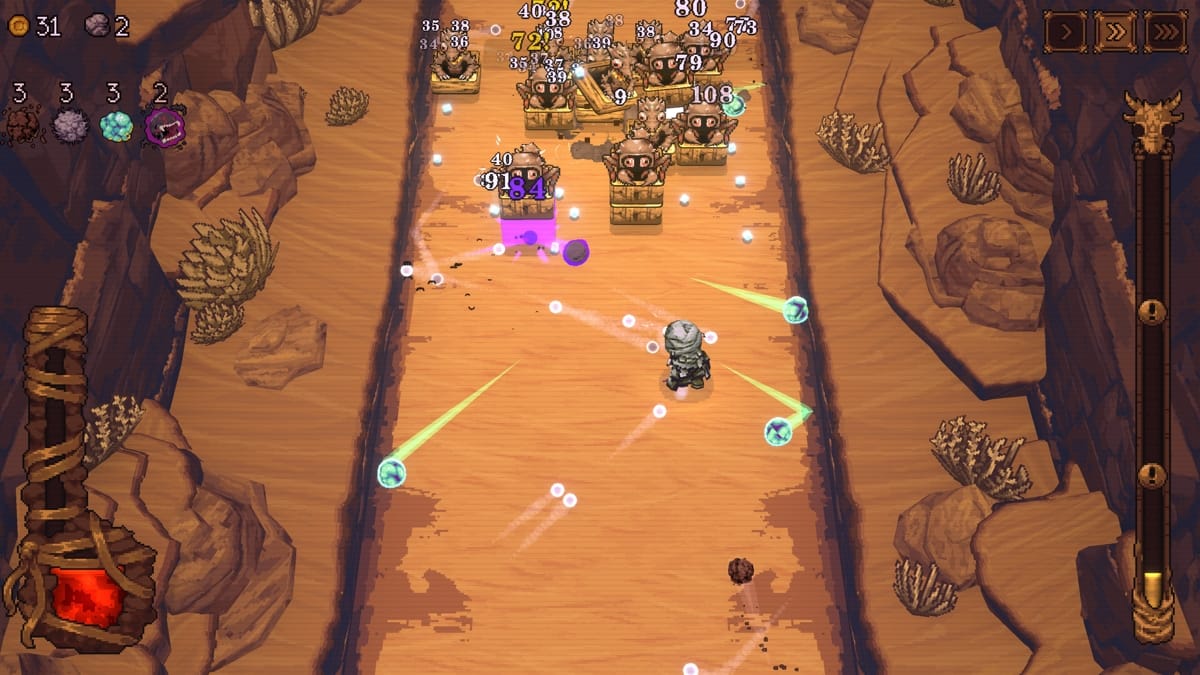
Because it might seem plausible to angle one's shots so that a ricocheting ball (which in turn incurs repeated damage) targets the righer row of foes. Bouncing as it does between the enemies it's struck, the ceiling/walls and then back to the same enemy, your character's ammo is strictly limited to what's in play. To put it another way: if those same ricocheting balls end up getting stuck at the top rows (dealing crucial damage to foes they may be) how are they going to get back to your position so as to let them loose again? It was only during the latter phases of clearing a run did this subtle consequence hit me. A consequence I had, unluckily, led myself astray on, under the assumption that such a strategy was unequivovally sound.
It's these moments where Ball x Pit is at its best. Away from the novel allure of "[Game X] meshed with [Game Y]", Ball x Pit manages to leverage its premise in a way that prioritizes the tug-o-war, push-and-pull of when and where short-term tactics should be utilised over their longer-term accomplices..and vice versa. Do you settle for just focusing on the front/nearer rows so as to not put your health pool at risk? Find too many enemies reach the bottom regions, wherein they automatically strike you, and that run might come to a grinding halt. When is the right time to aim for the more distance rows? Will such a time even exist?
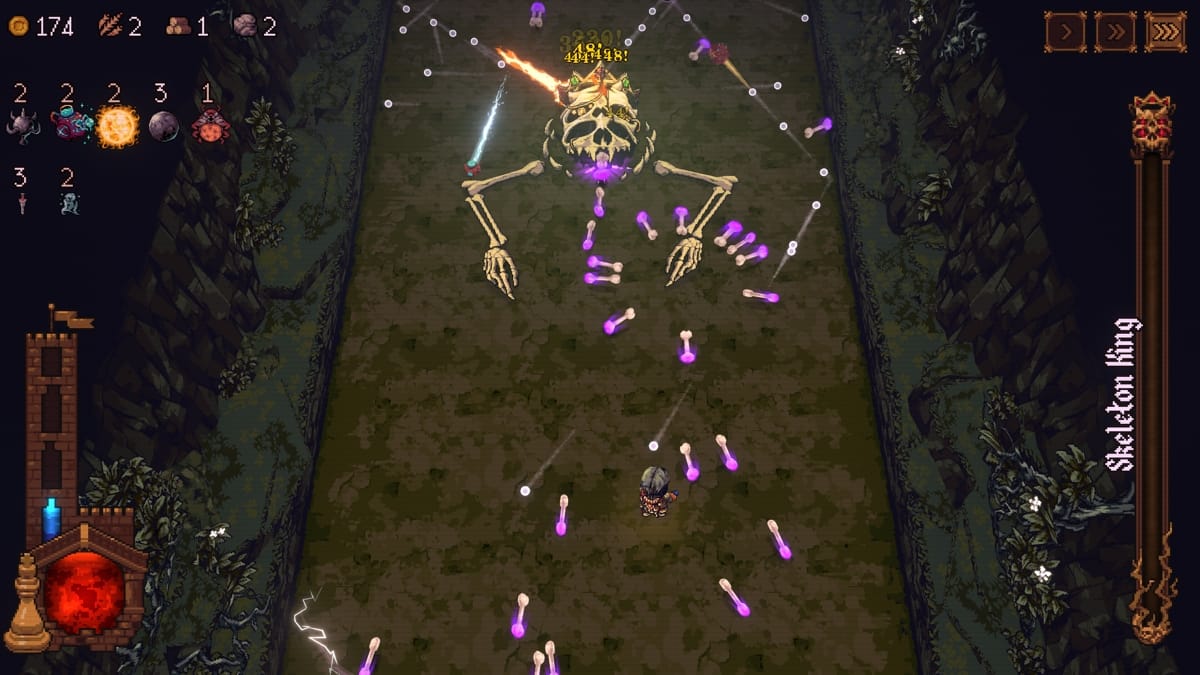
But as noted, focusing just on the "top" rows, could leave you completely vulnerable to the one or two strays you'd forgot to clean up beforehand. It's through this balancing act of rushing forth into levelling up but also taking note of what's heading your way, that Ball x Pit manages to elevate itself beyond some mindless sprint to just higher power for higher power's sake. Abilities that are perhaps more likely to incur area-of-effect ailments, or strike at foes in the same row/column, become just as prized as those that simply add to one's base damage. The idea of an ability that lets your ammo phase through enemies might sound like a no-brainer let alone tempting, but again, will that potentially leave you open (deprived of any ammo to even fire back) if a stray foe or two begins to creep up on you?
With such an analysis on mechanics and the decision-making employed mid-run, we haven't even touched on the prospect of boss fights – the climax to one's rectangular-shaped dungeon-crawling – potentially leaning further into this gambling with one's ammunition. Nor the base-building component to the game which, in the demo, understandably restricted it may be, hasn't revealed too much of its probable benefit as an area to make repeat visits to. But such questions don't feel all that concerning at present.
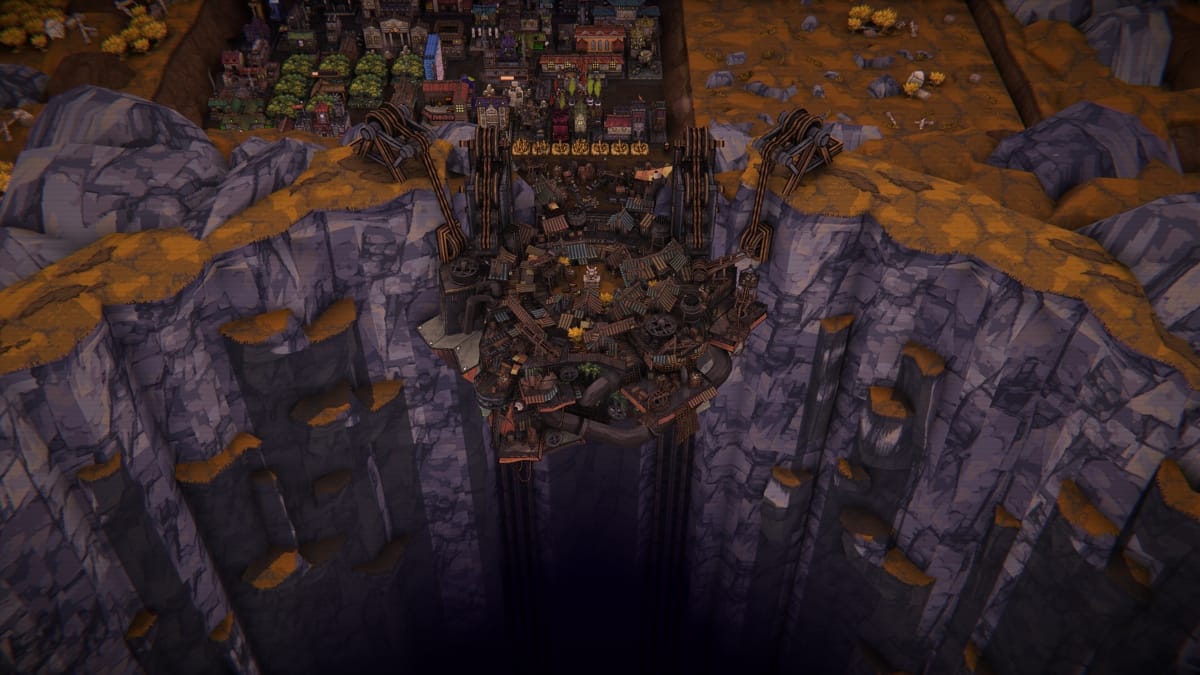
Especially when you have a core gameplay loop that is, dare I say, as terrifyingly addictive as Ball x Pit has flexed already. Kenny Sun and company's combining of Breakout's hidden chaos with that Vampire Survivors-like rush for power alike, wields more than just a novelty with its appearance. It also holds a crucial lesson to consider no matter the run: even the most powerful of states, can be undone with just the simplest of mistakes.


